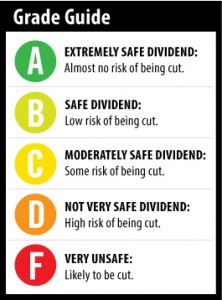 Smoking is a controversial subject. Some investors refuse to invest in a company that makes products that are so clearly dangerous. And that’s absolutely their right to stay away from those stocks.
Smoking is a controversial subject. Some investors refuse to invest in a company that makes products that are so clearly dangerous. And that’s absolutely their right to stay away from those stocks.
But as a dividend investor, I’m a fan of tobacco stocks and their fat dividends. If tobacco is a legal business, people have the right to smoke. And since the companies that make cigarettes pay dividends, I’m interested in them.
So is Don, who asked me to look at the safety of Philip Morris International‘s (NYSE: PM) dividend.
[ad#Google Adsense 336×280-IA]First, let’s acknowledge the risk with tobacco stocks.
There is a constant threat of legislation that could hurt the companies’ businesses.
Recently, the European Union banned advertising of electronic cigarettes.
The FDA is expected to tighten rules on e-cigs as well.
There is also the ongoing potential for lawsuits and data on adverse health effects of tobacco.
Now, the good news for investors – despite all restrictions, tobacco companies still generate tons of cash flow.
Philip Morris sells tobacco products overseas. Its sister company, Altria Group (NYSE: MO), does business in the U.S. The two companies split in 2008.
The company pays a “healthy” 4.6% dividend yield, which for a large, well-established company, is tough to match these days, unless you’re looking at a real estate investment trust (REIT) or master limited partnership (MLP).
How About an 8.5% Raise?
In 2013, Philip Morris generated $8.9 billion in free cash flow. It paid out $5.7 billion in dividends for a payout ratio of 64%. That’s below my 75% threshold, which means should the company have a bad year or two, it has plenty of wiggle room to keep paying and raising the dividend.
Incidentally, in its current form, Philip Morris has raised its dividend every year of its six-year existence. Altria has raised its dividend every year since 1969.
So the dividend-raising track record is strong.
In 2014, earnings and cash flow are expected to dip slightly, returning to 2013 levels next year and achieving free cash flow of $9.6 billion in 2016.
I expect the company to slow its dividend growth, which has been well into double-digit territory. Over the past three years, Philip Morris boosted its dividend by more than 13% annually, though it slowed last year to 10.5%.
Going forward, in order to stay at a payout ratio of 75%, it would need to slow the annual increase to about 8.5%, which is still nothing to cough at.
I’m sure most investors would be thrilled with an 8.5% raise every year. Keep in mind, that’s simply my forecast of how much Philip Morris will raise the dividend annually over the next three years, assuming it hits its cash flow projections.
But that brings up an important point. Notice that I’m predicting dividend raises to continue.
 With the company’s cash flow, I don’t see any reason why it won’t raise the dividend in the coming years.
With the company’s cash flow, I don’t see any reason why it won’t raise the dividend in the coming years.
And a dividend cut is out of the question.
Management knows that a key reason shareholders own the stock is for the dividend.
So they are going to do whatever is in their power to pay it, even if times get tough.
Investing in a tobacco company might not be for everyone, but for dividend investors, Philip Morris is a safe bet.
Dividend Safety Rating: A
— March Lichtenfeld
[ad#DTA-10%]
Source: Wealthy Retirement
